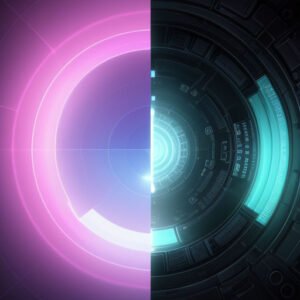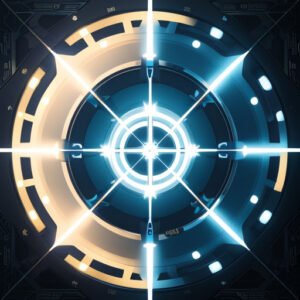Why Oscilloscopes Are Your Best Tech Sidekick for Visualizing Signals
Unlocking the Power of Oscilloscopes Explained
In today’s technology-driven world, understanding electrical signals is crucial for hobbyists, students, and professionals alike. Oscilloscopes explained reveal a fascinating device that turns invisible, complex signals into clear, visual waveforms. Whether troubleshooting gadgets, designing circuits, or learning electronics fundamentals, oscilloscopes act as your best tech sidekick for visualizing signals. This powerful tool allows you to see voltage changes over time, making it easier to analyze, debug, and innovate with confidence.
What Are Oscilloscopes and Why They Matter
Oscilloscopes are specialized electronic instruments designed to graph electrical signals, typically voltage, across a time scale. Unlike multimeters that only provide numerical values, oscilloscopes display wave shapes in real-time.
Basic Components of an Oscilloscope
– Display screen for waveform visualization
– Input probes to connect the device under test
– Time base controls to adjust the time scale
– Voltage scale knobs to calibrate signal amplitude
– Trigger system to stabilize repetitive signals
These components work together to offer detailed views of signal characteristics such as amplitude, frequency, rise time, and noise.
Why Visualization Helps in Electronics
Visualizing signals is essential because it:
– Detects irregularities or distortions hard to find with other tools
– Reveals timing relationships between different signals
– Helps in understanding signals’ behavior over time
– Assists in optimizing circuit performance and reliability
This visual insight transforms how you interpret electronic circuits, making troubleshooting faster and design more efficient.
Oscilloscopes Explained: Types and Features to Know
Choosing the right oscilloscope depends on your needs and budget. Knowing different types clarifies which one suits your projects best.
Analog vs. Digital Oscilloscopes
Analog oscilloscopes continuously display signals using a cathode ray tube (CRT). They offer intuitive real-time display with no latency but lack advanced features.
Digital oscilloscopes convert signals into digital data, providing:
– Storage and replay capabilities
– Precise measurements
– Advanced triggering options
– Signal processing and analysis
Digital models dominate the market today due to their versatility and user-friendly interfaces.
Key Features to Evaluate
– Bandwidth: Determines the highest frequency observable; higher bandwidth reveals more signal details.
– Sample rate: Number of samples per second affecting signal accuracy.
– Number of channels: Single or multi-channel input allows comparison of multiple signals simultaneously.
– Display type: Modern LCDs provide clear, colorful waveforms.
– Portability: Bench-top versus handheld devices affect mobility and convenience.
Understanding these features helps match an oscilloscope to your personal or professional projects.
How Oscilloscopes Help Visualize Signals: Practical Applications
Oscilloscopes explained truly shine when applied to real-world scenarios. Their capability to visualize signals proves invaluable across many electronics activities.
Troubleshooting Circuits
– Identify faulty components such as capacitors or resistors affecting waveform shape.
– Detect intermittent issues like glitches or signal dropouts instantly.
– Verify power supply quality by observing ripple voltage and transient responses.
For example, a distorted waveform on a speaker circuit might reveal a faulty transistor causing audio distortion.
Design and Development
Engineers rely on oscilloscopes to:
– Test prototype designs under different conditions
– Analyze timing between microcontroller signals and peripheral devices
– Optimize signal integrity in high-speed communication lines
A recent report from electronics engineers highlights oscilloscopes as indispensable during product validation phases, citing significant time savings.
Using Oscilloscopes Explained: Tips for Beginners and Pros
Mastering an oscilloscope can be straightforward with the right approach. Here are practical steps to get you started:
Getting Started with Basic Measurements
1. Calibrate your oscilloscope before probing signals.
2. Connect the probe ground to circuit ground to avoid noise.
3. Set voltage and time divisions to fit the expected signal range.
4. Use the trigger function to stabilize repetitive signals.
A steady waveform lets you interpret signal features precisely.
Advanced Techniques for Accurate Signal Analysis
– Use math functions like FFT (Fast Fourier Transform) to analyze frequency components.
– Utilize cursor measurements for precise amplitude and time interval calculations.
– Record signals over time with storage modes for later review.
These techniques enhance your ability to dig deeper into complex signals.
Choosing Your First Oscilloscope: Budget and Features Considerations
For newcomers, balancing cost and capability is key. Here’s what to consider:
Prioritize Essential Specs
– Bandwidth should be at least 5 times the highest frequency you expect.
– Sample rate at minimum twice the bandwidth for accurate representation.
– At least two channels to compare signals or measure differential signals.
Recommended Starter Models
– Affordable digital oscilloscopes like Rigol DS1054Z or Siglent SDS1202X-E provide solid features for beginners.
– Handheld scopes offer portability for fieldwork but may sacrifice bandwidth.
Quoting a user review: “The Rigol DS1054Z was a game changer in my hobbyist projects—easy to use and reliable, without breaking the bank.”
Making the Most of Oscilloscopes Explained: Resources and Learning
Continued learning accelerates your oscilloscope proficiency. Here are ways to deepen expertise:
– Explore manufacturer tutorials and webinars.
– Join electronics forums and communities for shared tips.
– Practice with simple circuits like square wave generators.
– Consult comprehensive guides like [EEVblog Oscilloscope Tutorials](https://www.eevblog.com/tutorials/oscilloscope-tutorials/) for in-depth knowledge.
Practicing regularly with varied signals is the best way to become comfortable and creative with this tool.
Final Thoughts on Oscilloscopes Explained
Oscilloscopes are more than just instruments; they transform how you interact with the invisible electrical world. From simple troubleshooting to intricate design tasks, oscilloscopes help you visualize signals with clarity and confidence. Whether you’re a student just starting or a seasoned professional, understanding oscilloscopes explained opens the door to deeper insights and smarter electronic solutions.
Ready to amplify your technical skills? Consider exploring an oscilloscope to elevate your projects, enrich your learning, and troubleshoot with precision. Dive into the world of signals today and experience why oscilloscopes remain the ultimate tech sidekick for all your electronic adventures.














Post Comment